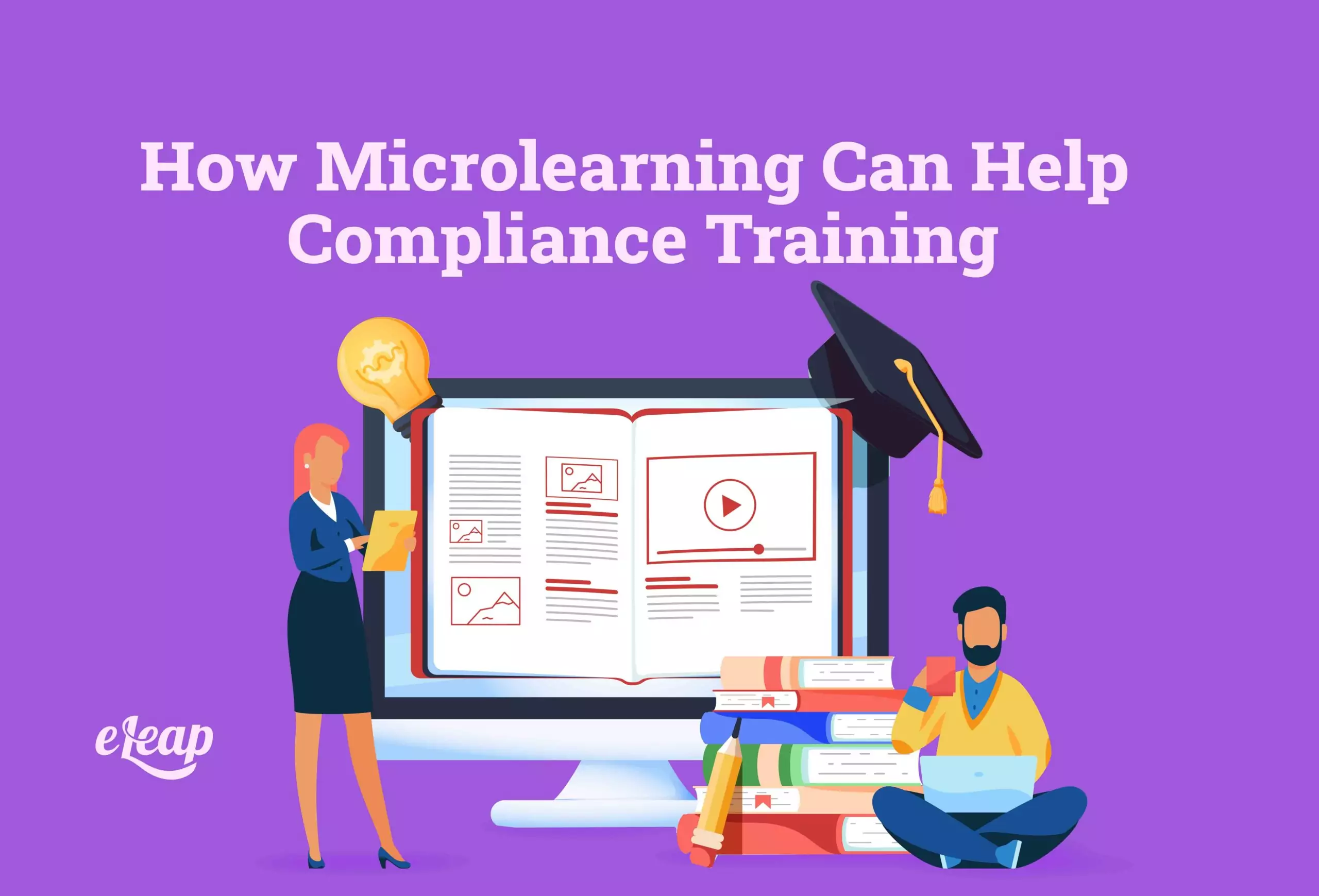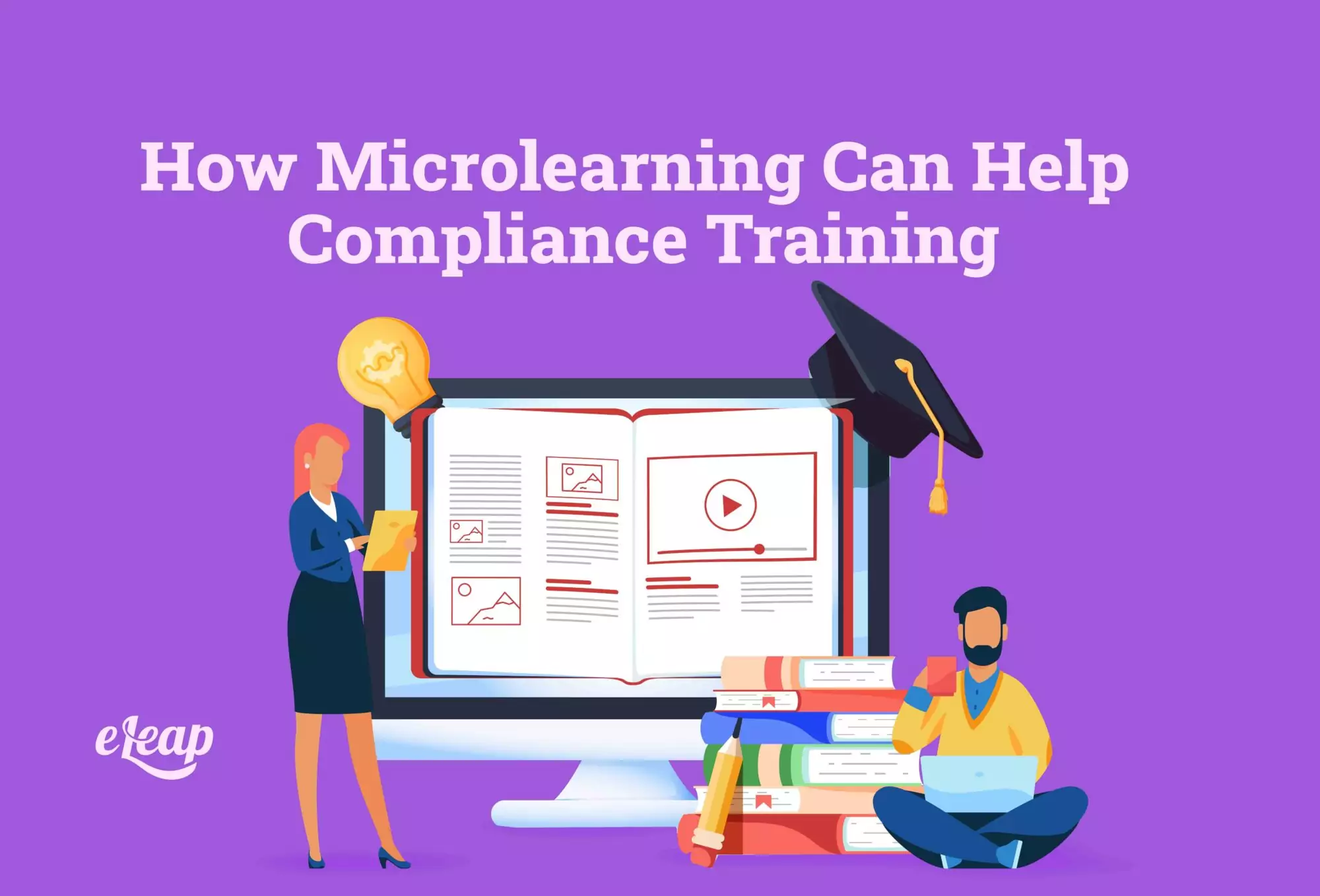How Microlearning Can Help Compliance Training

In our current world, everyone seems to be too busy with everything. People are too busy with work to get things done at home, and people are too busy with tasks at work to learn or train.
This is a recurring theme that seems to keep most members of the workforce in a continuing cycle of overwork and burnout. Additionally, the fact that many corporate world members have a problem with their attention spans doesn’t make staying engaged with learning and training any easier.
Luckily, the adoption of microlearning has changed the way employees participate in training courses and learning modules. Microlearning is a process that breaks down longer, more complex sections of information into small, more digestible segments of learning material.
These smaller sections allow employees to retain the knowledge much easier and learn more efficiently. This article will discuss how microlearning can help with compliance training.

Microlearning In Relation to the Forgetting Curve
The entire foundation of microlearning was formed on a concept established by German psychologist Hermann Ebbinghaus. This concept states people only remember 21% of what they learn in a month’s time.
Microlearning is based on the fact that the average human mind loses its ability to retain knowledge as we get older. The idea is that this model of learning helps eliminate the overload of long courses and increases the effectiveness of training modules.
Courses that incorporate microlearning use larger, more comprehensive topics and break them down into micro-modules. Examples of microlearning include infographics, case studies, mobile apps, and short videos. Not only are these modules much shorter, but they’re also more engaging.
The Process of Microlearning
Microlearning has gone through a process since its inception and has been used in different ways.
Microlearning for Corporate Training
Microlearning is a perfect fit for this training format because the current workforce relies heavily on mobile learning. Remote learning and the current corporate training model seem to be tailor-made for microlearning, as they both offer high levels of flexibility.
Smaller segments of content that stick with one idea make up microlearning. These smaller pieces of content are delivered via URL, which also raises the number of engaged students by focusing on collaboration and social environments.
Remote learners also benefit from the elements of just-in-time learning models, proving to be an effective format for this type of corporate learner. Delivering the right material at the right time makes the material more efficient because of its high relevancy.
Explaining Compliance Training
Compliance is a term that is synonymous with conforming to or following a certain set of rules. This means that compliance training exists to guarantee employees follow internal rules or industry-wide policies and regulations.
Normally, compliance training includes elements of safety, laws, consumer protection, and other regulatory practices. Compliance training is a mandatory part of the hiring process in certain industries. These industries include the pharmaceutical, medical, and real estate sectors.
How Can Microlearning Improve Compliance Training?
Crafting a comprehensive training program that incorporates all of the vital elements of regulatory compliance takes time. It’s critical that all of the most important compliance segments are included, so attention to detail is of utmost importance.
Doesn’t it seem like a waste to use a training program that’s boring and unengaging to deliver this information? It’s a waste of time, a waste of money, and a waste of resources. Because of the importance placed on compliance, training and studying for compliance certification can often put pressure on new employees.
What’s the solution to this?
Microlearning injects excitement into the learning process by including videos, how-tos, question and answer segments, and infographics. This keeps learners more engaged, often allowing them to forget about the pressures placed on them to cram the material in that allows them to ace the assessments.
Retention is also improved when you deliver bite-sized segments of learning and more entertaining content. Incorporating a remote feature caps the process off, allowing learners to maximize their learning time, leading to higher certification levels and pass rates.
How Do I Implement Microlearning to Improve Compliance Training?
You can use several strategies to implement microlearning into your compliance training, ensuring an effective microlearning experience.
Craft Real-Life Scenarios for Training Modules
When you use scenario-based training modules, you help employees improve their ability to make real-time decisions. However, these scenarios must be relevant and realistic; otherwise, they could be counterproductive.
In the end, learners become more prepared to face the scenarios outlined in training. Not only does this assist in compliance training, but it also makes them more efficient overall for their designated position or role within your company.
By expanding and building on their decision-making abilities, you help them ease the tensions during on-the-job work. This can be vital in helping them avoid critical mistakes in the future.
Infographics
Infographics aren’t just insightful and informing; they’re also entertaining to read. These educational graphics appeal to the eyes and highlight only the most important information relevant to the topics they cover.
Many times, it can be incredibly overwhelming to remember all of the rules and regulations of compliance. Utilizing the benefits of infographics makes remembering this information much easier, especially when broken up into different topics.
Whiteboards
Using whiteboard animations may keep team members engaged at higher levels. You can sync these drawings with audio, and you can craft them in a way that incorporates stories around real-life situations.
Gamification
Gamification is one of the most effective ways to keep learners engaged in any situation. Using it in mobile apps in a microlearning setting promotes an atmosphere of competition in your learning environment.
Employees who attempt to outperform their coworkers grasp the material more efficiently in an effort to become number one on the board. There’s no other way to become number one and receive badges other than learning the material fully.
Understanding all of these elements should be clear how valuable microlearning can be to your organization. In an area as important as regulatory compliance, adopting an effective learning process can be one of the most important tasks for your organization when it comes to new hires. This couldn’t be more important in our current corporate environment, as retention and employee talent is more important than it’s ever been.
Click to download your free eBook, ‘Practical Microlearning – Getting Started with Microlearning’.